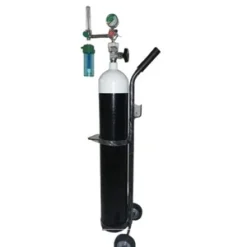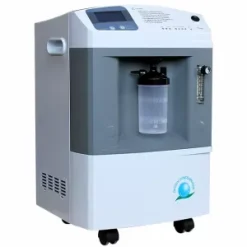Oxygen: The Essential Element for Life and Industry
What is Oxygen?
This vital, colorless, and odorless gas plays a crucial role in sustaining life on Earth. Comprising around 21% of the atmosphere, oxygen is essential for humans, animals, and other living organisms. Found as O₂, it is a key component of the air we breathe, actively participating in many biological and chemical processes. Furthermore, its presence is critical to maintaining ecological balance.
The Role of Oxygen in Human Life
First and foremost, oxygen is vital for cellular respiration, a process through which cells generate energy. Without it, cells cannot efficiently convert nutrients into usable fuel, making a continuous supply absolutely necessary for survival. In addition, our bloodstream transports this essential gas from the lungs to every part of the body, ensuring proper cellular function and energy production.
Moreover, a lack of oxygen can result in serious health problems. For instance, hypoxia occurs when tissues do not receive adequate oxygen, which, in severe cases, can lead to organ failure or even death. Therefore, maintaining sufficient oxygen levels is crucial for sustaining life and preventing medical emergencies.
Industrial Applications
Beyond its role in human survival, oxygen is indispensable across various industries. For example, its ability to enhance combustion makes processes like steelmaking and welding more efficient. Additionally, hospitals administer medical-grade O₂ to patients suffering from respiratory issues such as asthma or COPD, demonstrating its critical role in healthcare.
Furthermore, oxygen plays a pivotal role in water treatment, as it assists in breaking down harmful organic materials, thus contributing to cleaner water. In the realm of space exploration, oxygen supports the combustion of rocket fuel in the vacuum of space, making rocket propulsion—and by extension, space exploration—possible. Clearly, oxygen’s industrial applications are wide-ranging and vital to technological progress.
Environmental Impact
In terms of the environment, oxygen plays a critical role in maintaining ecological balance. The O₂ cycle ensures its continuous movement between the atmosphere, living organisms, and ecosystems. Specifically, plants and algae produce O₂ through photosynthesis, which helps maintain the atmospheric levels needed for life. Moreover, this process also aids in reducing carbon dioxide levels, thus contributing to efforts in combating climate change.
Additionally, oxygen supports the breakdown of pollutants and facilitates the health of aquatic ecosystems, underscoring its importance in environmental sustainability.
How It’s Produced
In addition to natural sources like plants, industrial methods generate large quantities of oxygen. For instance, fractional distillation of liquefied air and electrolysis of water are two common methods used to produce O₂ for various applications in industries and healthcare. These methods ensure that sufficient quantities of this vital gas are available to meet both biological and industrial demands.
Conclusion
In conclusion, oxygen is a life-sustaining gas indispensable for both biological functions and industrial processes. From powering cellular respiration to supporting essential industries and helping to balance the environment, its importance cannot be overstated. Without it, life as we know it would not exist, and many key industries would struggle to operate efficiently. Thus, oxygen’s contributions to both life and industry make it one of the most significant elements on Earth.








